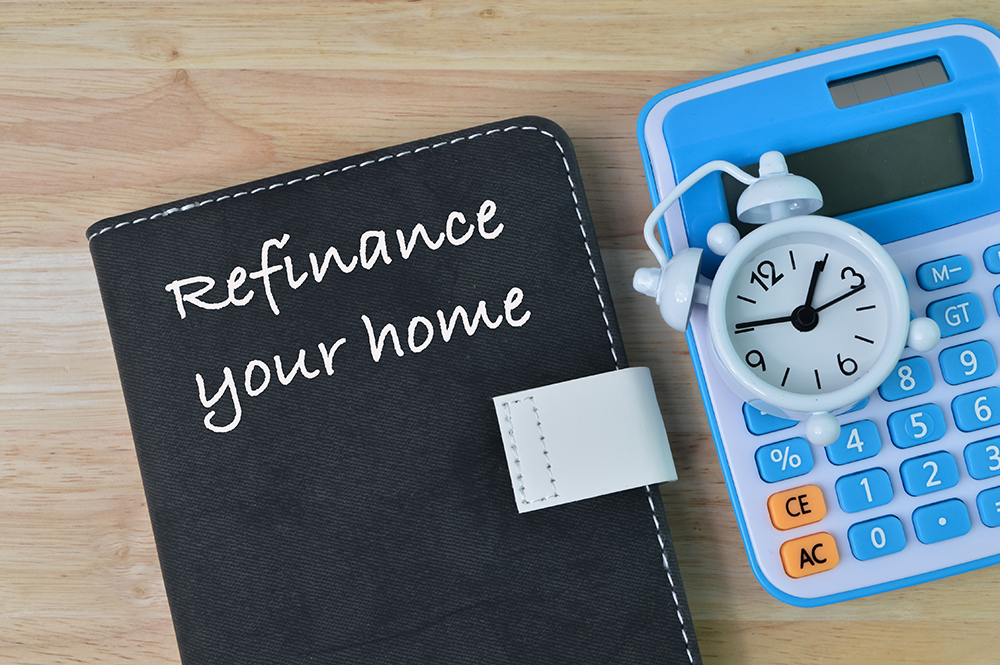
Refinance Your Mortgage: The Ultimate Guide to Lowering Rates in 2024
Refinancing your mortgage in 2024 is a hot topic among homeowners. With interest rates fluctuating and new mortgage products hitting the market, understanding the current mortgage landscape is crucial. Whether you’re looking to secure a lower interest rate, reduce monthly payments, or change your loan terms, refinancing could be your ticket to financial freedom.
Why should you care about mortgage rates?
Mortgage rates are more than just numbers; they significantly impact your monthly payments and the total cost of your home loan over time. When you refinance, you’re essentially swapping out your old loan for a new one, ideally with better terms. Knowing how these rates work will help you make smarter decisions.
What You’ll Learn in This Guide
- Clear Definitions: What refinancing means and why it’s beneficial.
- Popular Options: Detailed look at various refinancing programs available in 2024.
- Financial Benefits: How refinancing can save you money.
- Considerations: Factors to weigh before jumping in.
- Comparing Lenders: Tips for finding the best deals.
- Costs Breakdown: Understanding fees and how they affect your savings.
- Economic Conditions: Insight into current trends shaping the mortgage market.
This guide aims to equip you with all the knowledge you need to navigate the refinancing process confidently.
Exploring Various Mortgage Options
As you consider refinancing, it’s essential to explore various options available. For instance, if you’re a veteran or active-duty service member, VA loans could offer you some of the best rates and terms in the market.
If you’re still in the process of purchasing a home, securing a pre-approved mortgage can significantly enhance your buying power and streamline the entire process.
For those who prefer stability in their payments, a 15-year fixed-rate mortgage might be an ideal choice. This option allows homeowners to pay off their loans faster while enjoying lower interest rates compared to traditional 30-year mortgages.
Expert Guidance at Your Fingertips
Navigating through these options can be overwhelming, but you don’t have to do it alone. With experienced professionals from Forever American Mortgage, on your side, you’ll have access to personalized advice tailored to your unique financial situation.
Ready to Take the Next Step?
If you’re ready to explore your refinancing options further or have any questions about the process, don’t hesitate to reach out. Our team at Forever American Mortgage is here to assist you every step of the way. You can easily get in touch with us through our contact page, where we offer free personalized mortgage consultations.

Young man and his wife examining housing plans with real estate agent on a meeting in the office.
Understanding Mortgage Refinancing
Refinancing a mortgage involves replacing your current home loan with a new one, typically to secure better terms. It’s like hitting the refresh button on your mortgage agreement. Here’s why homeowners decide to go down this path:
Reasons Homeowners Choose to Refinance
- Lower Interest Rates: One of the biggest draws for refinancing is snagging a lower interest rate. This can lead to substantial savings over the life of your loan.
- Changing Loan Terms: Maybe you want to switch from a 30-year mortgage to a 15-year one, or vice versa. Changing the term can align your payments with your financial goals.
- Accessing Home Equity: Need cash for renovations or debt consolidation? Cash-out refinancing allows you to tap into your home’s equity.
- Switching Loan Types: Moving from an adjustable-rate mortgage (ARM) to a fixed-rate mortgage provides stability in your monthly payments.
The Role of Credit Profile
When you refinance, lenders take a close look at your credit profile. Your credit score and history play a significant role in determining the terms of your new loan:
- Credit Score: A higher credit score generally means better interest rates and terms.
- Debt-to-Income Ratio (DTI): Lenders also consider your DTI ratio, which compares your monthly debt payments to your gross monthly income.
- Payment History: Consistent, on-time payments on your existing mortgage can boost your chances of securing favorable refinancing terms.
By understanding these key factors, you can make informed decisions about whether refinancing is right for you and how best to approach the process. Whether you’re looking for lower home loan interest rates or different repayment terms, knowing what lenders value is crucial.
If you’re considering refinancing, apply online with Forever American Mortgage for a seamless experience. We offer secure application options that allow you to jump-start the loan process and lock in a low mortgage rate in just 10 minutes.
Keep these points in mind as we dive deeper into specific refinancing options available in 2024. If you’re interested in exploring various loan programs tailored to fit your needs, our experienced team at Forever American Mortgage can assist you in finding the right solution. Additionally, if you’re considering larger financing amounts for luxury properties, don’t miss out on our competitive rates for jumbo loans. For more insights and updates on mortgage trends, feel free to visit our blog.

Happy family
Exploring Popular Refinancing Options in 2024
1. FHA Cash-Out Refinance: Unlocking Home Equity for Financial Freedom
Refinancing your mortgage can be a game-changer, especially when you tap into options like the FHA cash-out refinance program. This option allows homeowners to refinance up to 80% of their home’s appraised value.
So, how does it work? Here’s a breakdown:
- Replace Your Existing Loan: You take out a new loan that pays off your current mortgage.
- Receive Cash Difference: The difference between the new loan amount and what you owe on your old mortgage is given to you as cash.
Eligibility Requirements
To qualify for an FHA cash-out refinance, you need to meet specific criteria:
- Credit Score: While the program is lenient, a credit score of at least 580 is typically required.
- Debt-to-Income Ratio: Your debt-to-income ratio should be reasonable, usually not exceeding 43%.
- Home Appraisal: A new home appraisal will be necessary to determine its current market value.
- Primary Residence: The property must be your primary residence for at least the past year.
Benefits
Opting for an FHA cash-out refinance can offer several advantages:
- Access to Home Equity: Unlock funds tied up in your property, which can be used for various purposes like home improvements or debt consolidation. This is ideal if you’re considering options such as Jumbo loans for larger expenses.
- Lower Credit Requirements: More accessible compared to conventional loans if your credit score isn’t perfect.
- Flexible Terms: Choose from various repayment terms that fit your financial situation.
Potential Drawbacks
However, it’s essential to weigh these benefits against some potential drawbacks:
- Closing Costs: Expect to pay closing costs, which typically range from 2-6% of the loan amount.
- Mortgage Insurance Premiums (MIP): You’ll need to pay upfront and annual MIP, which can add up over time.
- Risk of Losing Home Equity: Tapping into home equity means you’ll have less available if property values decline.
The FHA cash-out refinance offers a viable path for homeowners looking to leverage their home’s equity. By understanding both its benefits and potential drawbacks, you can make an informed decision tailored to your financial goals.
2. VA Streamline Refinance (IRRRL): Simplifying the Process for Veterans
Ever heard of the VA streamline refinance, also known as the Interest Rate Reduction Refinance Loan (IRRRL)? This nifty option is designed specifically for veterans and aims to make the refinancing process as smooth as possible.
Step-by-Step Overview of the IRRRL Process
The beauty of the IRRRL lies in its simplicity. Here’s a step-by-step breakdown:
- Check Eligibility: First things first, ensure you’re eligible. You must have an existing VA loan and be current on your mortgage payments.
- Minimal Documentation: Forget about heaps of paperwork. The IRRRL requires minimal documentation—no income or credit verification needed.
- Skip the Appraisal: One of the standout features is that no home appraisal is required, saving you both time and money.
- Find a Lender: Shop around for lenders who offer competitive rates on VA streamline refinances.
- Lock in Your Rate: Once you find a suitable lender, lock in your new interest rate.
- Close the Loan: Lastly, complete the loan closing process and start enjoying your reduced monthly payments.
Pros and Cons for Veteran Homeowners
Just like any other financial decision, opting for a VA streamline refinance has its upsides and downsides.
Pros:
- Lower Interest Rates: The primary goal is to reduce your interest rate, thereby lowering your monthly payments.
- No Out-of-Pocket Costs: Closing costs can often be rolled into the new loan, meaning less upfront expense.
- Quick Processing Time: Thanks to minimal documentation requirements, the approval process can be relatively quick.
Cons:
- Limited Cash-Out Options: Unlike an FHA cash-out refinance, the IRRRL doesn’t allow you to take out extra cash from your home equity.
- Funding Fee: There’s usually a small funding fee involved unless you’re exempt due to specific circumstances like disability.
For those looking at different types of refinancing options available in 2024, it’s worth considering how a VA streamline refinance compares with options like a fixed-rate mortgage or an adjustable-rate mortgage (ARM). This way, you can see how it stacks up against other refinancing methods such as FHA cash-out refinance programs designed for debt consolidation or accessing home equity.
3. Fixed-Rate vs Adjustable-Rate Mortgages: Which is Right for You?
When navigating the world of mortgage refinancing, understanding the difference between a fixed-rate mortgage and an adjustable-rate mortgage (ARM) is crucial. These two options offer unique benefits and risks, and the right choice depends on your financial situation and long-term goals.
Fixed-Rate Mortgage Pros and Cons
Pros:
- Predictability: Your monthly payments remain consistent throughout the life of the loan. This can make budgeting easier.
- Stability: Interest rates are locked in, protecting you from future rate increases.
- Long-Term Planning: Ideal for those who plan to stay in their home for many years.
Cons:
- Potentially Higher Initial Rates: Fixed-rate mortgages often start with higher interest rates compared to ARMs.
- Less Flexibility: If market rates drop significantly, you might miss out on potential savings unless you refinance using a reliable home refinance service.
Adjustable-Rate Mortgage (ARM) Advantages
Pros:
- Lower Initial Rates: ARMs typically offer lower initial interest rates and monthly payments compared to fixed-rate mortgages.
- Initial Savings: Great for short-term homeowners or those planning to sell or refinance before the adjustment period begins.
- Flexibility: Can be beneficial if you expect your income to increase over time or anticipate a change in living situation.
Cons:
- Uncertainty: After the initial fixed period, rates can fluctuate based on market conditions, leading to unpredictable monthly payments.
- Risk of Rate Increases: There’s a potential for significant payment increases if interest rates rise.
- Complexity: Understanding the terms and conditions can be more complicated than with fixed-rate mortgages.
Choosing between a fixed-rate mortgage and an adjustable-rate mortgage involves weighing these pros and cons against your financial circumstances, future plans, and risk tolerance. Whether you’re considering an FHA cash-out refinance program to unlock home equity or exploring a VA streamline refinance (IRRRL), understanding these basics will help you make an informed decision. For further assistance in finding the best mortgage solution tailored to your needs, consider reaching out to us.
The Financial Benefits of Refinancing Your Mortgage in 2024
Refinancing your mortgage is like giving your finances a fresh start. Here’s why:
Lower Monthly Payments Through Refinancing
One of the top reasons homeowners consider refinancing is to lower their monthly payments. By securing a lower interest rate, you can significantly reduce the amount you pay each month. Imagine what you could do with that extra cash:
- Pay off debt faster
- Save for emergencies
- Invest in home improvements
Interest Rate Savings from Refinancing
When you refinance to a lower interest rate, it’s not just about monthly savings. It’s about the long game. Lower interest rates mean:
- Reduced overall interest payments over the life of the loan
- Potential to pay off your mortgage sooner
- More money staying in your pocket rather than going to the bank
Example
Picture this: You have a 30-year mortgage at 5% interest on a $300,000 loan. Refinancing at 3.5% can save you tens of thousands of dollars over the loan term.
Key Takeaways
- Lower monthly payments free up cash for other uses
- Interest savings help build wealth over time
Refinancing offers a strategic way to manage and optimize your financial future.
If you’ve already paid off your mortgage or are close to doing so, you might want to consider a reverse mortgage. This option can eliminate your monthly mortgage payment, allowing you to keep your home while receiving payments instead.
Considerations Before Taking the Plunge: Is Refinancing Right for You?
Before diving into the refinancing process, it’s crucial to crunch the numbers. One essential calculation is the break-even point. This tells you how long it will take for the savings from your new loan to cover the costs associated with refinancing.
How to Calculate the Break-Even Point:
- Total Closing Costs: Add up all fees associated with refinancing, including appraisal fees, title insurance, and any other closing costs.
- Monthly Savings: Subtract your new monthly mortgage payment from your current payment to find how much you’ll save each month. You can use a helpful tool like the mortgage calculator provided by Forever American Mortgage to estimate your new payment.
- Break-Even Calculation: Divide the total closing costs by your monthly savings. The result is the number of months it will take to recoup your refinancing expenses.
Example: If your closing costs are $3,000 and you save $150 a month with the new loan, your break-even point would be 20 months ($3,000 ÷ $150).
Beyond the break-even point, consider your long-term financial goals related to homeownership:
- Future Plans: Are you planning to stay in your home long enough to benefit from refinancing? If you plan to move within a few years, it might not be worth it.
- Loan Terms: Do you prefer a shorter loan term for quicker payoff or a longer one for lower monthly payments?
- Rate Type: Would switching from an adjustable-rate mortgage (ARM) to a fixed-rate provide more financial stability for you?
Evaluating these factors helps ensure that refinancing aligns with both your immediate and future financial objectives.
Comparing Lenders & Rates: Finding the Best Deal on Your Refinance Loan
When you’re ready to compare interest rates for refinancing, it’s crucial to explore options from various lenders including banks, credit unions, and online platforms. Here are some strategies to help you secure the most favorable terms possible:
1. Shop Around
Don’t settle for the first offer you receive. Obtain quotes from multiple sources like traditional banks, credit unions, and online lenders. Each might offer different rates and terms which can significantly impact your savings.
2. Check Online Reviews
Use platforms like Yelp or Trustpilot to read reviews about lenders’ customer service, reliability, and transparency. For instance, you can check out Forever American Mortgage reviews to get an idea of their service quality.
3. Use Comparison Tools
Websites like LendingTree or Bankrate allow you to compare multiple offers side by side. This makes it easier to see who’s offering the best rates and terms at a glance.
4. Consider Local Credit Unions
They often provide competitive rates and more personalized service compared to larger banks. It’s worth checking if your local credit union offers special refinance programs.
5. Negotiate Terms
Once you’ve gathered several offers, don’t hesitate to negotiate. Let lenders know you’re shopping around; they might be willing to match or beat competitors’ rates.
6. Understand the Fine Print
Pay close attention to fees such as origination fees, appraisal costs, and closing costs. A lower interest rate might come with higher fees that could offset potential savings.
“The more you know about your options, the better position you’ll be in to make a decision that benefits your financial future.”
By following these strategies, you’ll have a comprehensive view of what’s available and be equipped to make an informed choice that aligns with your refinancing goals.
Understanding Costs Associated with Refinancing: What You Need to Know Before You Start
Refinancing your mortgage isn’t just about securing a lower interest rate. It also involves several costs that can impact your overall savings. Here’s a breakdown of typical closing costs borrowers should anticipate when pursuing a refinance loan:
- Application Fee: This fee covers the processing of your loan application and can range from $75 to $500.
- Origination Fee: Often 0.5% to 1% of the loan amount, this fee compensates the lender for creating the new loan.
- Appraisal Fee: An appraisal is usually required to determine your home’s current market value, costing between $300 and $600.
- Title Search and Insurance: Ensures there are no legal claims against the property. Expect to pay around $200 to $1,000.
- Credit Report Fee: Checking your credit score typically costs between $25 and $50.
- Recording Fees: Local governments charge these fees to record the new mortgage, which can range from $25 to $250.
- Attorney Fees: Depending on state requirements, attorney fees can vary widely from $500 to $1,000.
These expenses can quickly add up, so it’s crucial to factor them into your overall savings calculations. To minimize costs:
- Compare fees among lenders.
- Negotiate where possible.
- Check if you qualify for any waivers or discounts.
Understanding these costs helps you make an informed decision when considering refinancing options.
Understanding Economic Factors Impacting Mortgage Rates in 2024: A Guide for Homeowners
As a homeowner looking to refinance in 2024, it’s essential to grasp the economic factors that influence the mortgage market. These factors play a significant role in determining interest rates and borrowing costs. Here are some key elements to consider:
1. Inflation Trends
Inflation has a direct impact on mortgage rates. Here’s how different inflation scenarios can affect your refinancing plans:
- Rising Inflation: If inflation rates are expected to rise, mortgage rates are likely to increase as well. Lenders will demand higher interest rates to compensate for the decreasing value of money over time.
- Moderate Inflation: On the other hand, if inflation remains moderate, mortgage rates may stay stable or only increase slightly.
2. Federal Reserve Policies
The decisions made by the Federal Reserve regarding interest rates can significantly influence mortgage rates. Here’s what you need to know:
- Interest Rate Decisions: When the Fed raises interest rates to control inflation, it’s expected that mortgage rates will also climb.
- Quantitative Easing or Tightening: Policies aimed at either injecting liquidity into the economy or pulling it back can have a direct impact on borrowing costs.
3. Economic Growth Indicators
The overall health of the economy can also affect mortgage rates. Keep an eye on these indicators:
- GDP Growth: Strong economic growth often leads to higher mortgage rates as demand for credit increases.
- Employment Rates: High employment levels can push mortgage rates up due to increased consumer confidence and spending.
4. Global Economic Events
Events happening outside of the U.S. can create uncertainty and impact mortgage rates. Consider these factors:
- International Trade Tensions: Trade disputes and tariffs can create economic uncertainty, potentially leading to fluctuating mortgage rates.
- Global Crises: Events like pandemics or geopolitical conflicts can drive investors towards safer assets like U.S. Treasury bonds, which can lower mortgage rates.
By keeping an eye on these trends, you’ll be better prepared to make informed decisions about your refinancing options in 2024.
Exploring Renovation Financing Options
If you’re planning to renovate your home as part of your refinancing strategy, it’s worth exploring financing options like 203K loans. These loans allow homeowners to finance both the purchase and renovation of a property with a single mortgage.
Seeking Professional Guidance
Navigating the complexities of refinancing can be challenging, which is why seeking advice from experienced professionals can be beneficial. At Forever American Mortgage, we have knowledgeable team members who offer personalized mortgage consultations tailored to your specific needs.
To learn more about Forever American Mortgage and how we can assist you with your refinancing needs, visit our about us page.
Take Control of Your Financial Future Through Strategic Mortgage Refinancing!
Embarking on the journey of mortgage refinancing can appear overwhelming, but with a clear understanding of the options available today, it becomes significantly easier to navigate.
Before making any decisions:
- Evaluate your personal financial situation: Ensure you have a clear picture of your current finances and future goals.
- Consider the benefits of refinancing: This could include lower monthly payments, reduced interest rates, or accessing home equity through options like USDA loans that offer great rates for eligible homeowners.
- Explore specialized refinancing programs: For instance, if you’re struggling with an underwater mortgage, HARP loans could be a viable solution to lower your payment while keeping your home.
- Compare multiple lenders: Shop around to find the best rates and terms.
Remember, refinancing is a strategic move to enhance your financial stability. Take charge of your mortgage decisions and set yourself up for a brighter financial future. For personalized assistance, consider reaching out to our experienced team members such who can guide you through the process.
